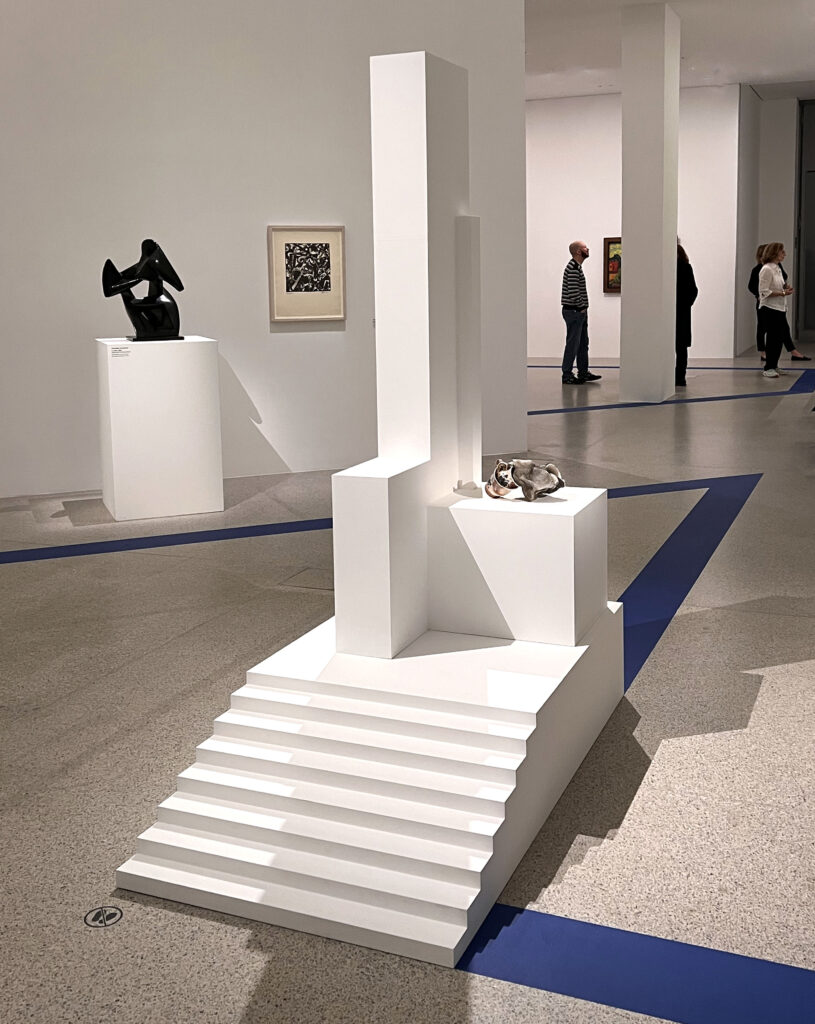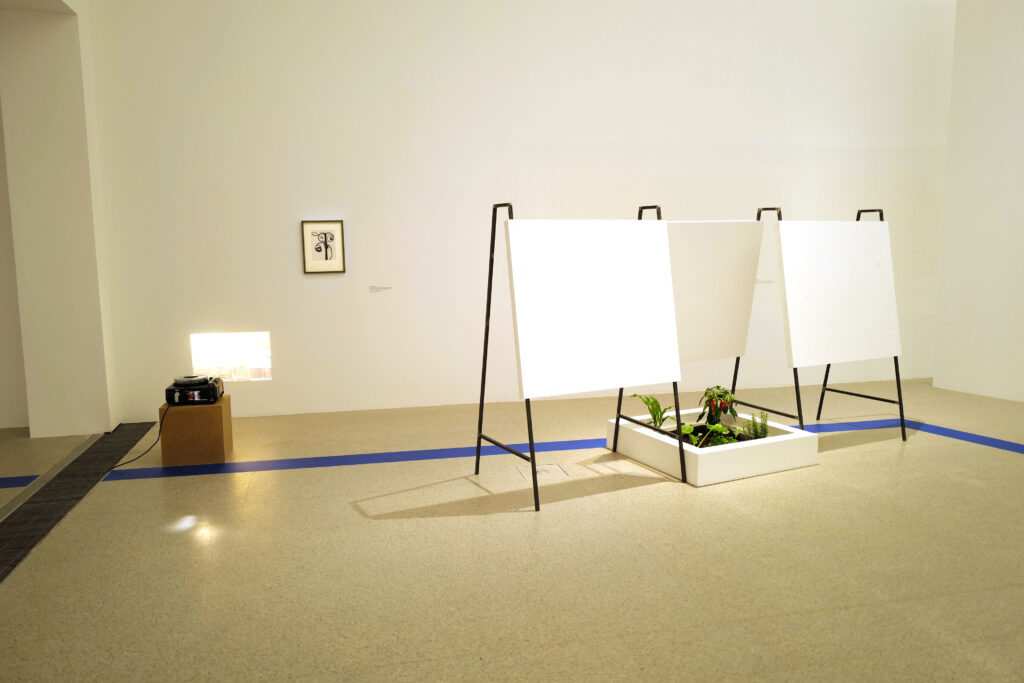Nikita Kadan in mumok, Vienna
The exhibition The World of Tomorrow Will Have Been Another Present draws connections between works of classical modernism and contemporary art, between the 1920s and the 2020s. The exhibition features five large-scale installations, five exhibitions in one exhibition, linked together by the participating artists’ shared interest in the topic of time.

Nikita Kadan, Barbara Kapusta, Frida Orupabo, Lisl Ponger, and Anita Witek were invited to select works of classical modernism from the mumok collection and enter into a dialogue with them. In an exchange and in debate, confronting issues against the backdrop of disparate temporal conditions, through formal analogies and aesthetic contradictions, the five artists tackle both historical and contemporary subject matters: be it image politics between propaganda and critique, from careless to sensitive practices of appropriation, body images between identity politics and universalism, or the constitution of society between the desire for clear-cut categories and the complexity of a thoroughly networked world.

As a Ukrainian artist, Nikita Kadan confronts his own reality with abstract representations of violence and war from the past. Against the backdrop of the loss of a coherent historical narrative in art (and also beyond), his selection of works of classical modernism and the formal and thematic analogies in his own works draw parallels to past and present memory politics. At the forefront: the monument, often strategically placed in public space to commemorate a historical event or figure. However, besides their original purpose, from today’s perspective monuments bear witness to more than just what they represent. They also speak about the conditions under which they were erected as a collective memory aid. Nikita Kadan’s installation reveals the mechanisms of forgetting and remembering as well as historiographical breaks and continuities. Not only history enters the picture, but also the monument’s own history of reception. Read more about Nikita Kadan in mumok.
Curated by Franz Thalmair
in collaboration with Nikita Kadan, Barbara Kapusta, Frida Orupabo, Lisl Ponger, and Anita Witek

Artists: Alexander Archipenko, Hans Arp, Giacomo Balla, Willi Baumeister, Rudolf Belling, Hans Bellmer, Herbert Bayer, Karl Blossfeldt, Louise Bourgeois, Constantin Brâncuşi, Victor Brauner, André Derain, Friedl Dicker-Brandeis, Marcel Duchamp, Raymond Duchamp Villon, Max Ernst, Alberto Giacometti, Julio González, Juan Gris, George Grosz, Albert Paris Gütersloh, Raoul Hausmann, Florence Henri, Johannes Itten, Nikita Kadan, Barbara Kapusta, Friedrich Kiesler, Ernst Ludwig Kirchner, Henri Laurens, Fernand Léger, René Magritte, Kazimir Malevich, André Masson, Vladimir W. Mayakovsky, László Moholy-Nagy, František Muzika, Frida Orupabo, Alicia Penalba, Antoine Pevsner, Franz Pomassl, Lisl Ponger, Man Ray, Germaine Richier, Aleksander Mikhailovich Rodchenko, August Sander, Oskar Schlemmer, Karl Schmidt-Rottluff, Victor Servranckx, Edward J. Steichen, Alexander Stern, Nikola Vučo, Anita Witek, Fritz Wotruba, Ossip Zadkine
